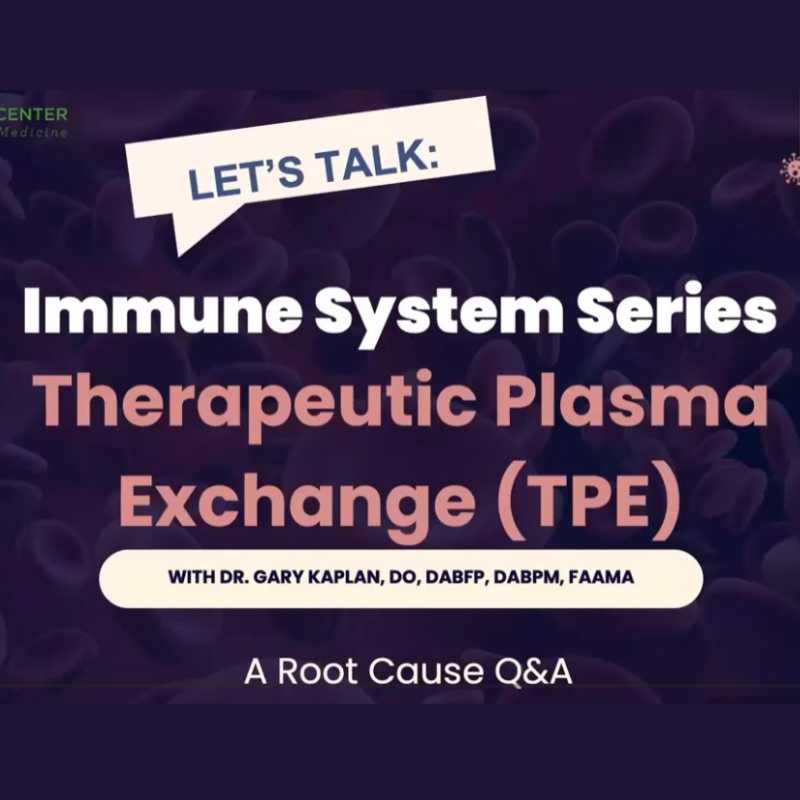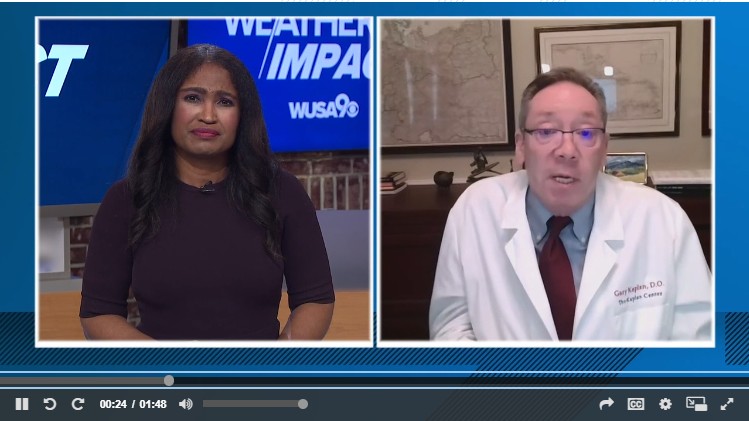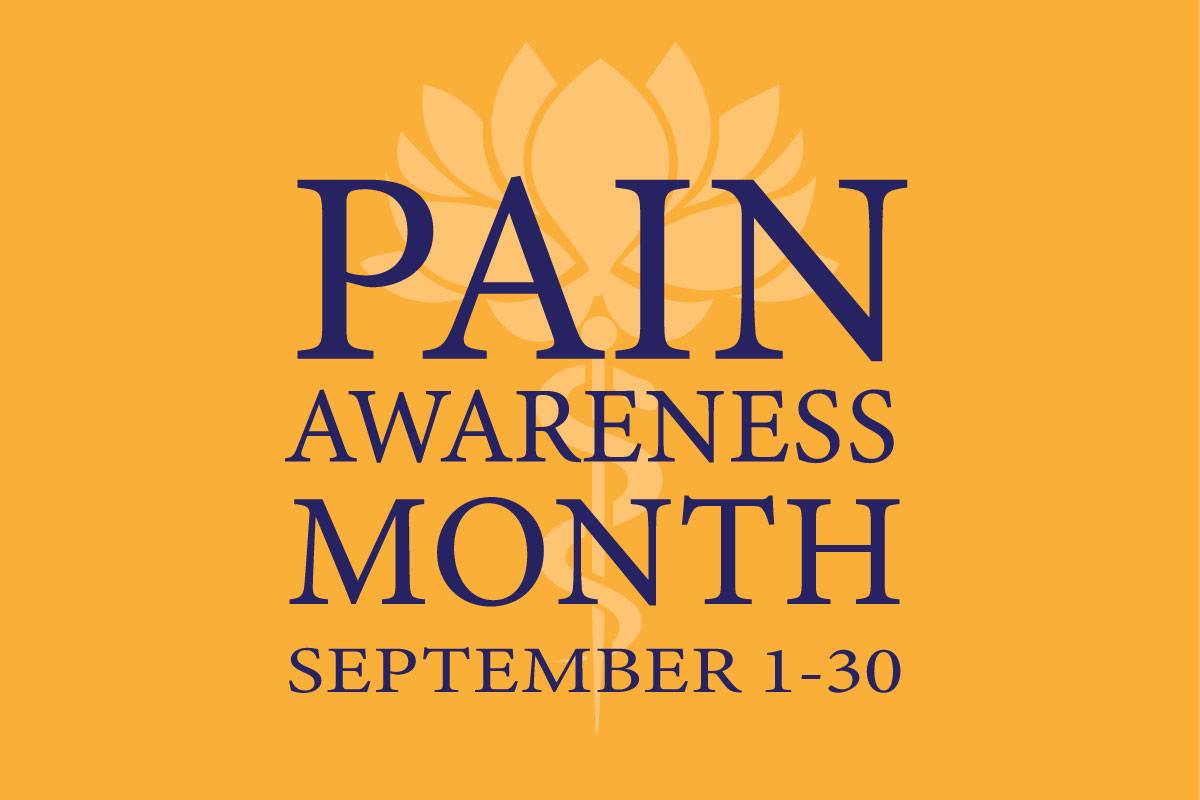
5 Ways We Can Keep Your Immune System Strong
December 10, 2025/by Kaplan Center
Want to Take Your Workout to the Next Level Next Year? These Tips Can Help
December 8, 2025/by Kaplan Center
Dr. Kaplan’s Dos and Don’ts of the Holiday Season
December 3, 2025/by Kaplan Center
Let’s Talk Webinar – A Root Cause Q&A
December 2, 2025/by Kaplan Center
Navigating Holiday Meals with Gut Issues: Simple Tips for a Comfortable Season
December 1, 2025/by Chardonée Donald, MS, CBHS, CHN, CNS, LDN
Craniosacral Therapy for TMJ | Say Goodbye to the Daily Grind
November 19, 2025/by Patricia Alomar, M.S., P.T.
From Compassionate Care to Personal Healing: A Letter to My Patients
November 18, 2025/by Kaplan Center
8 Steps to a Healthier Gut—and a Longer, Healthier Life
November 18, 2025/by Kaplan Center
Mid-Life Irritability & Fatigue Improved by Hormonal Balancing
November 13, 2025/by Lisa Lilienfield, MD
From Challenges to Change: Dr. Kaplan on Healthcare’s Biggest Challenges
October 29, 2025/by Kaplan Center
Overlooked Dangers of Mold Exposure and How to Stay Safe – Dr. Kaplan Talks to WUSA9
October 27, 2025/by Kaplan Center
Let’s ‘Fall’ Into Wellness: A Nutritionist-Approved Immune-Boosting Recipe for Cold and Flu Season
October 13, 2025/by Chardonée Donald, MS, CBHS, CHN, CNS, LDN
PANS/PANDAS – When Sudden Symptoms Signal Something More
October 9, 2025/by Kaplan Center
Beating Burnout, A Nutritionist’s Perspective
October 1, 2025/by Chardonée Donald, MS, CBHS, CHN, CNS, LDN
3 Things That Can Happen After Stopping GLP-1s
September 11, 2025/by Chardonée Donald, MS, CBHS, CHN, CNS, LDN
What Families Need to Know About COVID and Flu Season
September 3, 2025/by Kaplan Center
September is Pain Awareness Month
September 1, 2025/by Kaplan Center
Dr. Kaplan Spoke to Northern Virginia Magazine About COVID, Flu, and Immunity — Here’s What You Should Know
August 14, 2025/by Kaplan Center
“Why Do I Feel Like Crap?”: The Overlap Between Long COVID and Perimenopause
July 30, 2025/by Kaplan Center
Why People Are Turning to EMDR (and Why You Might Want to Too)
July 23, 2025/by Kaplan CenterAre you looking to improve your overall wellness?
Personalized care you can trust.
Our integrative, non-surgical treatment approach is highly successful in maintaining wellness and also treating chronic pain and illness. For more than 30 years, we have delivered superior, cutting-edge health care in the Washington, DC area.
QuickLinks
Contact Information
Tel: 703-532-4892
Fax: 703-237-3105
6829 Elm Street, Suite 300
McLean, Virginia 22101
Map It
Hours of Operation
Mon – Thu : 8 am – 5 pm, ET
Fri : 8 am – 12 pm, ET
Dr. Kaplan Invited to Discuss the Role of the Immune System & Microbiome in the Onset of Autoimmune Disease Following Infection
/in News/by Kaplan CenterFor the second consecutive year, Dr. Gary Kaplan was invited to present at the Walter Reed National Military Center’s monthly acupuncture webinars. The purpose of these webinars is to bring experts in the fields of chronic pain and acupuncture to share their expertise and treatment strategies with the medical staff at the center.
This year, Dr. Kaplan elaborated on the concept of autoimmunity and the role of the adaptive immune system and the gut microbiome in the onset of autoimmune diseases following an infection.
Autoimmunity is when the body loses self-tolerance and starts attacking its own tissues and organs resulting in either an organ-specific autoimmune disease, such as Type 1 Diabetes or a systemic autoimmune disease such as Multiple Sclerosis (MS) and Systemic Lupus Erythematosus (SLE).
About 5% of the US population suffers from an autoimmune disease, although Dr. Kaplan believes that this percentage may not account for all of the autoimmune diseases that are caused by viral and bacterial infections.
Dr. Kaplan also discussed the mechanisms of autoimmunity by which the immune cells get activated in a disorganized manner and start mistakenly attacking healthy cells, the tests we utilize here at The Kaplan Center to determine if there is an autoimmune process going on, and how to translate the data into actionable treatment strategies.
The title of Dr. Kaplan’s presentation was “Autoimmune Encephalopathy of Infectious Etiologies and their Role in Chronic Pain and Depression.”
CES 2020: Dr. Kaplan Spotlights Pain & Sleep Modulating Devices
/in Lifestyle, Treatments, Uncategorized, Wellness/by Kaplan CenterDr. Gary Kaplan was back at CES 2020 exploring the latest advancements in digital health technology.
With over 100 million Americans in daily, and sometimes debilitating pain, there is an urgency to find viable, drug-free products for people to manage their pain and overall wellness.
Two companies of particular interest to Dr. Kaplan were Sana Health, Inc.* and URGONight. These companies make wearables with the ability to modulate pain perception and sleep patterns.
For people in chronic pain, these products have the potential to improve their day to day lives without the side effects of medications. As the opioid crisis grows larger each year, finding practical solutions for drug-free pain management is critical.
Supplements Offer Value, But Come With Caveats
/in Nutrition, Wellness/by Gary Kaplan, DOA recent article in the Washington Post rightly expressed outrage on the massive amount of money Americans are spending on dietary supplements each year. In this country alone, $35 billion dollars of our hard-earned money is being pumped into in an industry that has little oversight and is selling products that for the most part have no known benefits whatsoever.
I completely agree with the fact that the overwhelming number of supplements taken by Americans are pretty much worthless if not outright dangerous. The majority of the supplements sold and discussed in this study are for weight loss, muscle building, and sexual enhancement. Studies have repeatedly shown that these products are frequently not what they claim to be. Many are adulterated with medications that can potentially harm the people who are taking the supplement. Many have other potentially harmful contaminants. Most of them have little if any scientific support for efficacy.
Is there a time and place for supplements?
Absolutely. Caveats abound, however. The FDA does not regulate over-the-counter nutritional supplements. One study showed that many over-the-counter melatonin supplements did not contain the dose advertised on the label with ranges from 0% of the advertised supplement to over 200 x the dose. This can be an especially serious problem in taking a supplement like vitamin D where overdoses can have serious health consequences. So, the first caveat is that you need to know if you can trust the manufacturer.
The second caveat is – why are you taking the supplement? For people on a healthy diet, a general multivitamin is not necessary. Supplements should address specific issues and be monitored appropriately. Is there any research that the supplement is helpful? At what dose for which patients? The research is ongoing, conflicting, and ever-changing so you really need to be talking with someone who is knowledgeable about supplements if you are going to be serious about improving your health.
The third caveat is – are you on the right diet for you? The definition of a healthy diet is changing and as we get better with genetic and other testing methods, we are learning that one diet fits all is not true. It turns out that foods that might be excellent for one person, such as a paleo diet, may be a disaster for another, resulting in gout and heart disease. Also, the diet that is appropriate for you today might not be appropriate when you are sick or after a major illness. This gets complicated and you need a good coach who can help tailor a proper diet for YOU.
The supplement issue is complicated. If we are going to take supplements, we are going to need to be smart consumers and treat them as seriously as we would anything else that we put in our bodies.
Gary Kaplan, D.O., DABFM, DABPM, FAAMA
Medical Director Kaplan Center for Integrative Medicine
The Kaplan Medical Center Store offers a variety of supplements from trusted suppliers. Click here to visit the store.